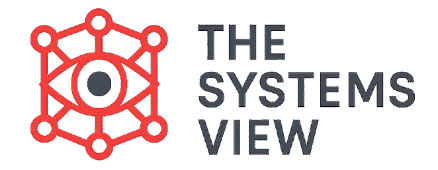We’ve explored archetypes that deal with quick fixes. Now, let’s look at a different kind of pattern which is the third archetype called Limits to Success. This describes a situation where something starts with great success and grows quickly. But as it grows, it hits a limit that stops the growth. The success itself creates a force that slows it down and can even cause it to decline.
Imagine a small band that becomes very popular. They are booked for more and more shows. But they don’t have time to write new songs or practice. The band’s success (more shows) leads to a limit (no time to practice or create). Soon, the quality of their music drops, and their fame begins to fade. This is the classic “Limits to Success” story.
What is the “Limits to Success” Archetype?
This archetype is a pattern where a reinforcing loop of growth runs into a balancing loop of limits. The key parts of this pattern are:
- The Reinforcing Loop: This is the part that drives growth and success. Something you do creates more of a good result, which makes you want to do it more. This is a positive cycle. (e.g., Good service leads to more customers, which gives you more money to offer good service).
- The Limiting Condition: This is the part of the system that cannot grow forever. It could be a limited resource, a lack of people, or a limit on how fast something can be done. As the reinforcing loop grows, it puts more pressure on this limiting condition. (e.g., a small number of staff members).
- The Balancing Loop: As the pressure on the limiting condition grows, it creates a force that slows down the reinforcing loop. It’s the limit fighting back. (e.g., overworked staff members lead to lower quality service, which slows down customer growth).
The trap is that people often try to push harder on the reinforcing loop (e.g., get even more customers) when the real problem is the limiting condition. They don’t see that their success is what created the limit.
Important: The key lesson of “Limits to Success” is that there is always a limit to growth. True success comes not from pushing harder on the gas, but from finding and removing the handbrake—the limiting condition that is slowing you down.
A Common Example: A Successful New Product
This archetype is often seen with new products that are very popular.
- Success (Reinforcing Loop): A company releases a new phone that everyone loves. The company gets more sales, which gives them money to make more phones. The cycle of success and growth is strong.
- Limiting Condition: The company’s small factory can only produce a certain number of phones each month.
- Balancing Loop: As demand for the phone grows, the factory is pushed to its limit. The workers get tired, mistakes happen, and the quality of the phones drops. Long wait times for customers also become a problem. This poor quality and service slow down sales and damage the brand’s reputation, stopping the growth.
The Practice Example from the Ebook: The Manager and the “Great” Employee
The ebook gives an example of a manager who has a “great” employee who is very good at their job.
- Success (Reinforcing Loop): The manager gives the employee more and more work because they are so good. The employee is successful, which makes the manager give them even more work.
- Limiting Condition: The employee can only work a certain number of hours.
- Balancing Loop: As the employee takes on more work, they become overworked and stressed. The quality of their work starts to drop, and they become less successful. This forces the manager to stop giving them so much work, and the employee’s success is limited.
How to Find a Lasting Solution
Solving this archetype requires you to look for the limits, not just keep trying to grow.
- Identify the Limiting Condition: Stop focusing on the success. Instead, ask: “What is the one thing that is holding us back?” Is it a lack of resources, people, or time?
- Invest in the Limit: Once you find the limit, invest your time and resources there. For the new phone company, this might mean building a new factory or finding a way to make phones faster without losing quality.
- Adjust Expectations: Sometimes, the best solution is to accept that there is a limit and manage your expectations. You might need to slow down the growth to keep the quality high.
- Find the Next Limit: Once you fix the first limit, the system will start growing again. But it will hit a new limit. A lasting solution is to always be looking for the next limit to success and planning how to address it.
Conclusion
The “Limits to Success” archetype reminds us that nothing can grow forever. Success itself can create the forces that slow it down. By learning to recognize this pattern, we can stop trying to push harder and instead focus on finding and fixing the real limitations. This allows us to manage growth in a smart way, ensuring that success is not a short-term sprint, but a long and healthy journey.



